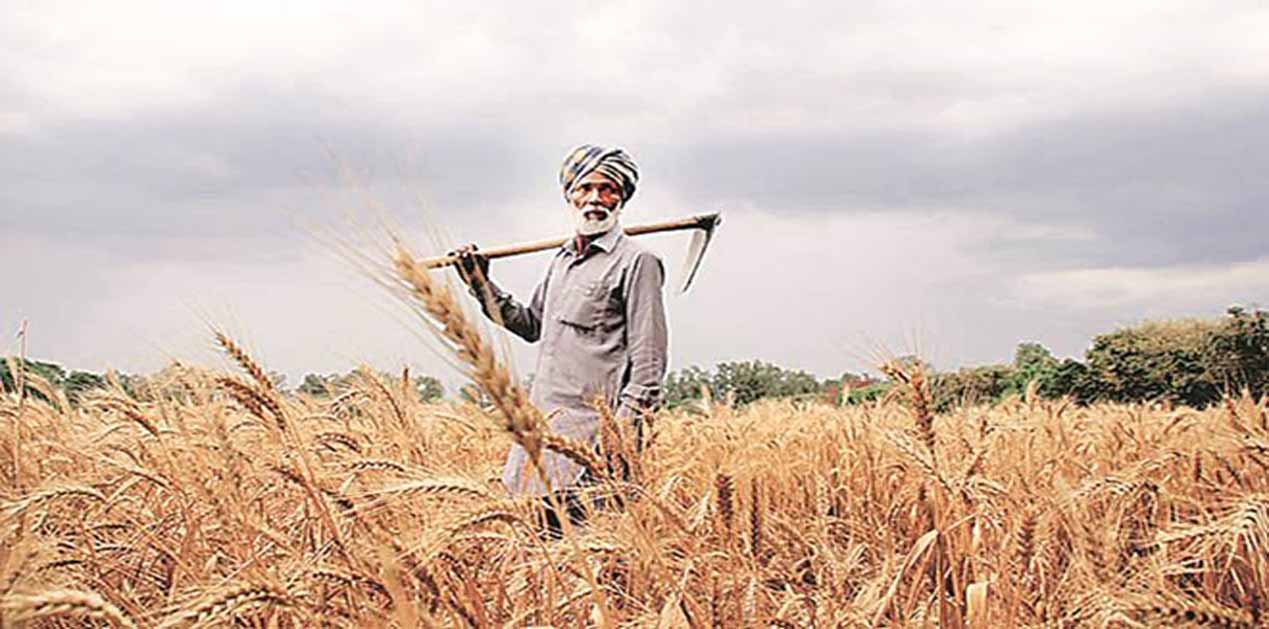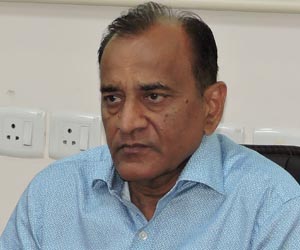Around the time of the 2019 Lok Sabha election, the e-National Agriculture Market (e-NAM) will complete three years of its launch. While the performance has been mixed nationwide — a huge success in many regulated markets, modestly so in others, and not quite taking off in a few others — the potential for change in the way agricultural produce is traded cannot be denied.
The Union Budgets of 2014-15 and 2015-16 provided the first clear hints of a major change in the functioning of Agricultural Produce Market Committee (APMC) mandis across the country. The Budget announcements related to the establishment of an Agri-Tech Infrastructure Fund (ATIF) and the creation of an e-portal for the National Agriculture Market that would link farmers and traders within States as well as inter-State. The ATIF received a budget allocation of Rs 200 crore to begin operations and the scheme envisaged the deployment of a common e-market platform — to be called e-NAM — in 585 select, regulated wholesale agricultural produce markets by March 2018. The overarching aim was to enhance farmer income through the following objectives:-
- To integrate markets, beginning at the State level and then taking the process forward across the country through a common online market platform that would facilitate a pan-India trade in agricultural commodities;
- To streamline marketing and transaction procedures and establish uniformity across all markets with a view to promoting efficient functioning of these markets;
- To enhance better marketing avenues for both the seller (farmers) and the buyer (trader) through online access, removal of informal asymmetry between farmer and trader, better and real-time price discovery based on actual demand and supply, transparency in the auction process, ensuring price that is commensurate with quality, and online payments to plug leakages and delays;
- To put in place quality testing facilities that would help in better informed biddings by buyers;
- To promote stability in pricing and ensure availability of quality produce to the end consumer.
Clearly, what was envisaged was nothing less than a revolutionary overhaul of the agricultural commodities’ marketing mechanism — and that too nationwide — and it needed an equally dramatically new ecosystem. The Small Farmers Agri-Business Consortium (SFAC) was mandated with the key task of implementation. It had to manage and seamlessly integrate both the virtual market (e-NAM) and the backend ‘physical’ market as well. The online process involved a one-time registration of farmers/sellers, creation and processing of details at the entry gate, weighing, quality checking, auctions/trade transactions, payments by buyers to sellers and other agencies involved in the rain of transaction. The physical aspect dealt with the entire market flow of agricultural commodities.
But the implementation could proceed only after an online platform was created. Experts were roped in to develop a special software for e-NAM, which was provided free of cost to any market that opted to join the national network. Besides, any customisation that was needed by a particular market, too was assured. These were specialised jobs and the Union Ministry of Agriculture’s Department of Agriculture, Cooperation and Farmers’ Welfare (which helmed the scheme) decided to rope in a private player — the Hyderabad-based Nagarjuna Fertilizers and Chemicals Limited — as its Strategic Partner. The private entity was asked to design, develop, test, implement, maintain, manage, enhance and modify the set of application and modules of the e-NAM platform across various markets in the country — in short, everything from administration to Management Information System (MIS). The Strategic Partner was also made responsible for ensuring that software faults were resolved in a time-bound manner, processing of data requests that were received from time to time from the SFAC in a time-bound period etc. The National Informatics Centre (NIC) was coopted as a Technical Partner.
The Ministry of Agriculture had in September 2016 published Operational Guidelines for the promotion of e-NAM, and among other things, the guidelines included the eligibility criteria for getting assistance under the scheme. It emphasised the need for States and Union Territories to initiate APMC reforms (agriculture is a State subject) in three primary areas to qualify for assistance in operating the e-portal trading system. The first was to have a single trading licence that would be valid throughout the State. The second was to ensure that was a single point levy of market fee across the State. And the third was to have the State agriculture marketing department or similar such body directly facilitate the provision for e-auction/e-trading. The Operational Guidelines observed that appropriate State legislation or an executive order would be needed to establish a single trading licence across the State. Not just that, States would have to take care that prohibitive practices such as charing high security deposit fees or stipulating a minimum quantity eligible for trading, are avoided.
With the guidelines for assistance made clear, the other important step was to process the approval for assistance. For this purpose, a Project Appraisal Committee (PAC) was formed, and it was to this PAC that States/Union Territories could apply for approval of detailed project reports and grants under the scheme. A prescribed format was prepared to facilitate the approval with complete transparency. Senior officials of the Ministry of Agriculture were made members of the approval panel. The SFAC became the lead agency to helm the e-NAM project with support from the Strategic Partner.
So far, more than one crore farmers have been registered on the e-NAM portal nationwide; the registration of farmers increased dramatically from 37.96 lakh during 2016-17 to over 50 lakh during 2017-18. As on March 23, 2018, e-NAM had completed the integration of 585 regulated markets on the e-market platform in 16 States and two Union Territories — this was ahead of the targeted date of March 31 the same year. Now the plan is to integrate 415 more markets by March 2020. In all, more than a lakh traders and over 66,000 commission agents have been registered. Initially started with just 25 commodities, the e-trade facility now covers 114 commodities. As on September 30, 2018, trade recorded on the e-NAM portal stood at a value of Rs 50,575 crore, and in terms of volume it was more than two crore tonnes. The average number of bids per lot (of produce varying in quantity depending on the product and market) across the country too has gone up from 2.4 bids per lot in 2016-17 to 3.4 bids in 2017-18, thus demonstrating the enthusiasm of traders for the e-market portal and fetching better returns to the seller (farmer). It is a growing phenomenon — in September 2018, the nationwide average bid stood at 4.3 per lot.
With the benefits of a unified market for agricultural commodities managed through an e-portal being so obvious, why was the system not put in place years ago? The equally obvious answer is: Lack of political will. The Government of Prime Minister Narendra Modi, since its inception, had resolved to put the farming sector on the priority that it deserved, realising that the aim of a new India could not be achieved if the agricultural economy were allowed to languish. Over the last four years, budget for the agriculture sector has been nearly doubled, to Rs 2.12 lakh crore. Various steps have been taken to enhance farm productivity and income, such as higher minimum support prices, increase in irrigation reach, larger use of technology, boost to animal husbandry etc. The Government also resolved to double farmer income by 2022 through these measures. In line with the new determination, the Modi regime launched the e-NAM scheme on April 14, 2016.
However, the problem of convincing the stakeholders to adopt the e-NAM platform remains a niggling one in many places. Farmers, traders and commission agents — they all have some issues. The trader is worried about coming into the tax net once he deals through the electronic medium, the farmer is concerned about getting a lower price if his product is assayed (quality tested), and the commission agent is bothered about eventually being left out of the system. One feeds into the other’s fears, and together they seek to maintain the status quo. Clearly, more needs to be done.
(The writer is a senior political commentator and public affairs analyst.)
(The paper is the author’s individual scholastic articulation. The author certifies that the article/paper is original in content, unpublished and it has not been submitted for publication/web upload elsewhere, and that the facts and figures quoted are duly referenced, as needed, and are believed to be correct). (The paper does not necessarily represent the organisational stance... More >>
Image Source: https://images.financialexpress.com/2017/06/FE-Farm1.jpg










Post new comment